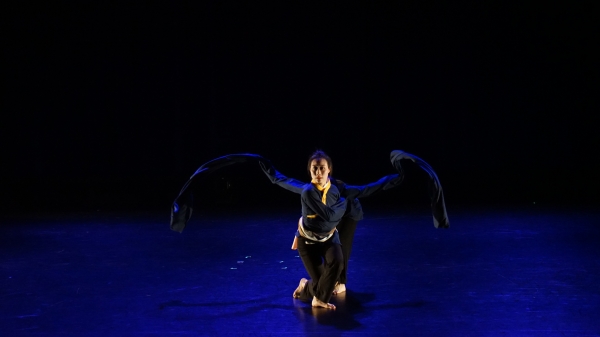In this time of social distancing, people are finding new ways to stay busy without common forms of entertainment such as shopping malls, movie theaters or gyms. Creativity has become the norm in living everyday life.
This form of imagination was front and center during “When Crises Unleash Your Imagination,” a Future Tense webinar co-hosted by ASU, New America and Slate magazine. Held on April 2, this was the latest in a series of “social distancing socials” that Future Tense is hosting over Zoom during the pandemic, in lieu of previously scheduled in-person events. Find the schedule here.
Future Tense’s Torie Bosch spoke with Ed Finn, director of the Center for Science and the Imagination at ASU, about how the pandemic might be able to bring out the creative side of people that is not always able to emerge while interacting with others in person. Finn believes that a lot of great work can come from isolation, citing Henry David Thoreau and Mary Shelley as prominent examples of those who found creative inspiration in spending time alone.
“When you think about art, it always comes out of isolation because you need to create a space that is uniquely your own to make something beautiful,” Finn said. “Distancing can bring about a different perspective, and you have to find a way to change your own life in a way that can make that different point of view possible.”
Bosch pointed out how people have been finding interesting ways of collaborating virtually during the pandemic and asked Finn how isolation might change how people work together in the future, especially since some groups have had to completely reinvent how they do their work.
“It’s good for us to recognize that a lot of things we thought could only happen in a room together can be done in different ways,” Finn said. “It’s another way to unlock our imagination about what we do and how we do it.”
Finn added that he hopes that this experience will make companies more open-minded to options like teleworking, and that such opportunities will become more available to people.
According to Finn, this particular crisis will hopefully help society look ahead to the future so we can better overcome such obstacles in more creative ways, and that storytelling could be a key to solving future problems.
“One of the fundamental things stories do is they encourage us to think farther ahead and to cultivate the imaginative power of empathy for other people who are living now and other people who will live in the future,” Finn said. “That’s how we can use our own mind-storytelling machinery to help us become more forward-thinking and make better choices for the future.”
Top photo by Pixabay
More Arts, humanities and education

Sociology student passionate about preventing domestic and gender-based violence
Editor’s note: This story is part of a series of profiles of notable spring 2024 graduates. With so many diverse career options available to students, uncovering individual passions and ambitions is…

ASU Wind Symphony’s performance at regional conference motivates, inspires
ASU Wind Symphony students describe their recent performance at the College Band Directors National Association, or CBDNA, Regional Conference in Las Vegas and the journey that led them there as “…

Spring Dance Fest features guest artists, student choreographers
The School of Music, Dance and Theatre will premiere two new works by guest artists Michele Byrd-McPhee and Frankie Martinez at this year’s Spring Dance Fest. Arizona State University students will…
